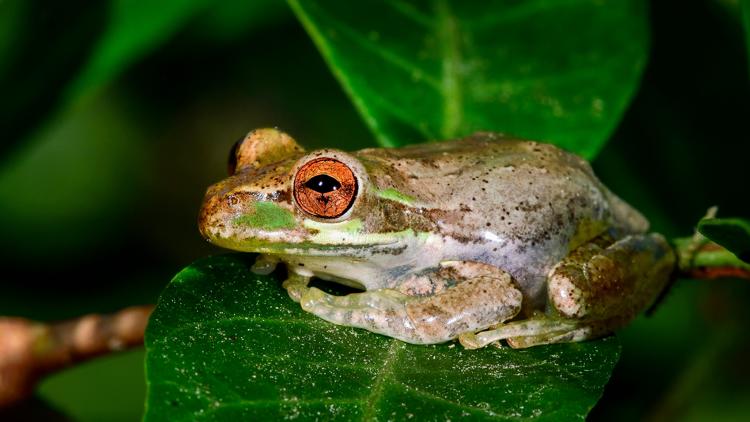FLORIDA, USA — Cuban tree frogs can be difficult to distinguish from Florida native tree frogs, but knowing how to identify them can mean all the difference for both your and Florida's health.
Cuban tree frogs are an annoying pest that can be white, gray, green or brown and can change colors. The frogs can have dark streaks or spots on their backs or may be a solid color with no markings, according to UF Wildlife.
The frogs are considered invasive because of the harm they inflict on the native ecosystems. They eat at least five different species of native frogs, as well as snakes and lizards.
RELATED: Woman's photos inside Polk County Animal Control go viral; sheriff's office issues scathing response
Cuban tree frogs hang by lights on the walls of houses, where their food can be found: insects. They often poop on walls and windows, take over birdhouses and lay eggs in fish ponds and bird baths, according to UF. They grow to be very large and are known to cause power outages by short-circuiting utility switches.
Humans are also at risk of these frogs. The "slime" their skin secrets can irritate a person's nose and eyes and may trigger attacks in asthma sufferers, UF says.
How to get rid of Cuban tree frogs
Capturing a frog and re-releasing it elsewhere is illegal and irresponsible to the Florida Ecosystem, according to UF. Here's what to do when you have a Cuban tree frog in or around your house.
- Capture the frog in a plastic bag to avoid direct skin contact with it.
- Liberally apply a product that contains 20% benzocaine to the back or belly of the frog. The frog will quickly become unconscious. Benzocaine products include first aid or burn sprays and toothache gels or liquids.
- Seal the plastic bag and put it in the freezer overnight. By the next day, the frog will be humanely dead, and you can throw the bag out.



